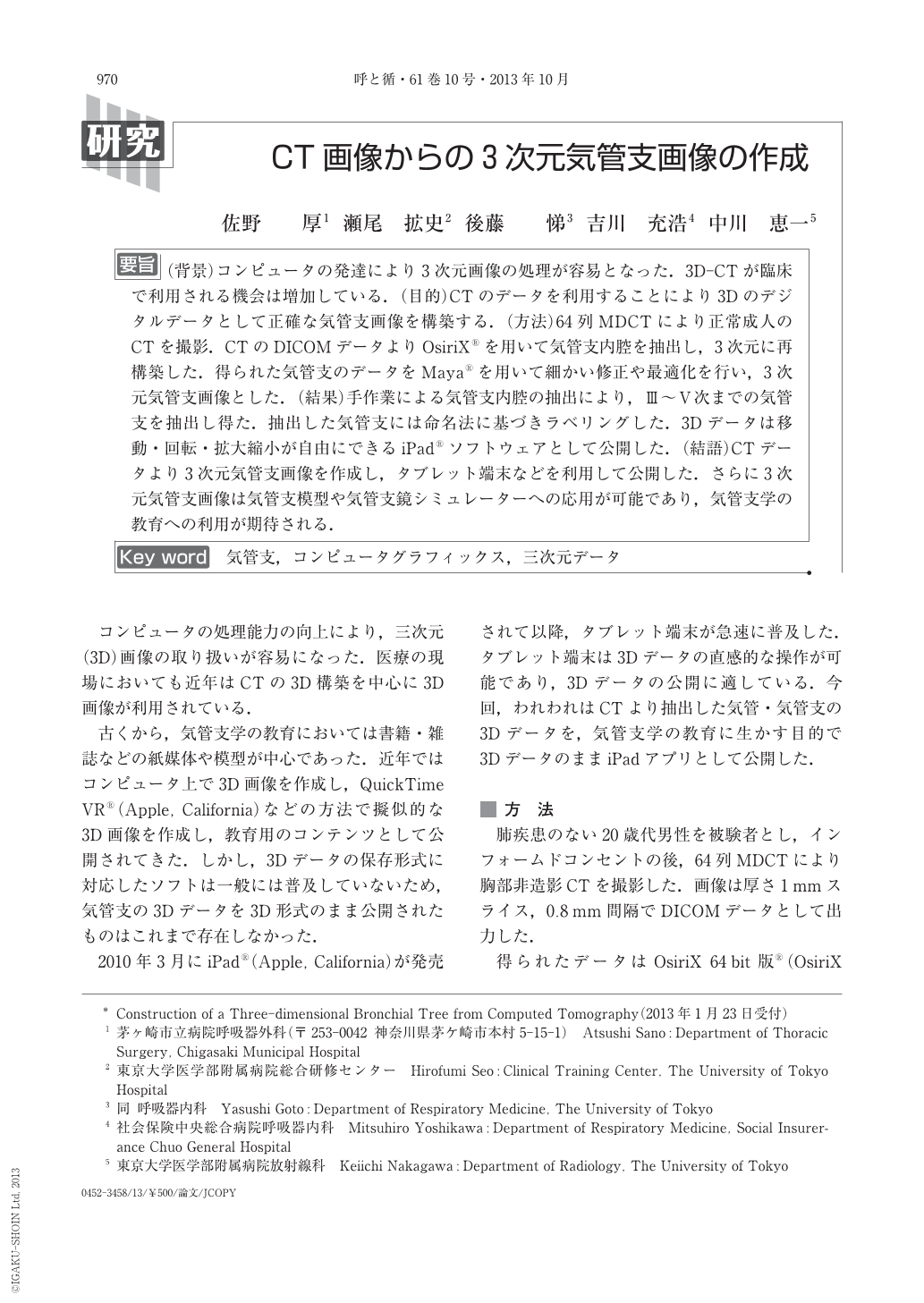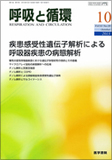Japanese
English
- 有料閲覧
- Abstract 文献概要
- 1ページ目 Look Inside
- 参考文献 Reference
要旨 (背景)コンピュータの発達により3次元画像の処理が容易となった.3D-CTが臨床で利用される機会は増加している.(目的)CTのデータを利用することにより3Dのデジタルデータとして正確な気管支画像を構築する.(方法)64列MDCTにより正常成人のCTを撮影.CTのDICOMデータよりOsiriX®を用いて気管支内腔を抽出し,3次元に再構築した.得られた気管支のデータをMaya®を用いて細かい修正や最適化を行い,3次元気管支画像とした.(結果)手作業による気管支内腔の抽出により,Ⅲ~Ⅴ次までの気管支を抽出し得た.抽出した気管支には命名法に基づきラベリングした.3Dデータは移動・回転・拡大縮小が自由にできるiPad®ソフトウェアとして公開した.(結語)CTデータより3次元気管支画像を作成し,タブレット端末などを利用して公開した.さらに3次元気管支画像は気管支模型や気管支鏡シミュレーターへの応用が可能であり,気管支学の教育への利用が期待される.
Advances in technology have facilitated the increased use of three-dimensional image processing based on computed tomography(3D-CT). Chest CT of normal adults was performed using a 64-column multidetector row CT scanner. Visual information on bronchial lumens was extracted using OsiriX® software.
With manual extraction of visual information of the bronchial lumens, we were able to extract information on up to the third-to fifth-order bronchi. The bronchi from which information was extracted were then labeled. Three-dimensional bronchial images were constructed using Maya® software.
We created a three-dimensional bronchial tree using CT data and the results were used to develop software that allows the user to move, rotate, and scale it on the iPad®. This imaging program can potentially develop into a real model to be used during bronchoscopy training or as a bronchoscopy simulator. We also expect that this technology will have educational applications in bronchology.

Copyright © 2013, Igaku-Shoin Ltd. All rights reserved.


